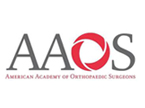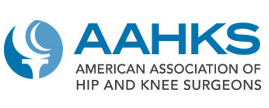News
Comparison of Outcomes Between Modular Dual Mobility and Conventional Hip Implants in Primary, Elective Total Hip Arthroplasty
Modular dual mobility designs (MDM) are designed to reduce the risk of postoperative dislocations following primary total hip arthroplasty (THA). This study investigated both the usage and outcomes (ie, patient-reported outcomes and complications) associated with MDM hips compared with conventional implant designs.
What Is the P.O.L.I.C.E. Principle?
The P.O.L.I.C.E. principle may be the new way to ice and otherwise treat a musculoskeletal injury, such as a sprain or strain. The acronym stands for the five steps involved: protection, optimal loading, ice, compression, and elevation. One thing it's missing? Rest, a component of the long-used R.I.C.E. method (rest, ice, compression, and elevation). Some healthcare practitioners now consider P.O.L.I.C.E. an advanced and favored approach.
Aerobic exercise found to be most effective for knee osteoarthritis
For patients with knee osteoarthritis, aerobic activities such as walking, cycling, or swimming are likely to be the best exercise for improving pain, function, gait performance, and quality of life, finds a study published by The BMJ today.
Hip Weakness May Contribute to Knee Pain
If you have knee pain or other knee problems, your physical therapist may pay close attention to your hips and the strength of your hip muscles. Why? Because your hip muscles, like the gluteus medius, control the position of your knees when you are walking, running, or jumping.
Q&A: How sports-related concussions affect reaction times
When playing sports, it's important to remember: Brains don't have seat belts. When rapid acceleration or deceleration of the brain inside the skull occurs with a blow to the head, a concussion happens, which in some cases can lead to lasting impacts on motor and cognitive skills needed to keep athletes at the top of their game.
Successful management of PJI occurred in about 50% of patients
Results presented at the Musculoskeletal Infection Society Annual Meeting showed successful management of periprosthetic joint infection occurred in a little more than half of cases after total joint arthroplasty.
What Happens to Your Body When You Play Tennis Regularly
Research shows tennis may extend lifespan and improve heart health, bone strength, mobility, and social connection. While injuries, cost, and access can be drawbacks, experts agree that tennis provides broad health benefits.
In-Hospital Exposure and Opioids Prescribed After Total Knee Arthroplasty
Opioids are frequently used intraoperatively and during post-anesthesia care unit (PACU) care in total knee arthroplasty (TKA) cases and are commonly prescribed after surgery despite known adverse effects. This study examined whether in-hospital opioid exposure is related to postoperative opioid prescribing in opioid-naïve TKA patients.
What to know about knee stiffness
A stiff knee is a common complaint, especially among older adults and those who are very physically active. Knee stiffness can occur due to low flexibility or muscular imbalances in the legs, injury, or arthritis. The most suitable treatment for knee stiffness depends on the underlying cause.
Tips for healing a sprained ankle fast
Sprained ankles can be very painful, and severe sprains can require months of recovery. However, a person can take several steps at home to help speed their healing and reduce the risk of re-injury.













